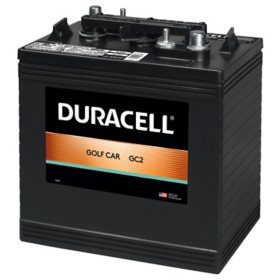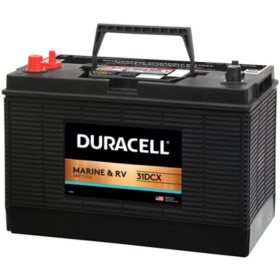- Good Sam Community
- Everything RV
- Technical Issues
- Re: Volts and Dehumidifier
- Subscribe to RSS Feed
- Mark Topic as New
- Mark Topic as Read
- Float this Topic for Current User
- Bookmark
- Subscribe
- Mute
- Printer Friendly Page
Volts and Dehumidifier
- Mark as New
- Bookmark
- Subscribe
- Mute
- Subscribe to RSS Feed
- Permalink
- Report Inappropriate Content
Aug-18-2019 03:29 PM
My question is... My rig has a 7.5 kw generator which works great but I am still confused about when to run it to charge the batteries. We have a residential fridge. The display shows in volts and charged the batteries are consistently above 12.4.
As the day and night wears on the volts drop as we all know. I would run the generator a couple of hours in the morning and a couple more in the evening. If I could not run the generator at all the volts would drop below 12. Is there a number like 12, 11.8, 11.5 that I should definitely start the generator?
Second question. We purchased a dehumidifier. A really good one for when we are not traveling since we live on the Gulf Coast in a rainy area. I am running it on 40% now. Should it be lower or is 40% good?
2018 Jeep Cherokee Trailblazer
David & Ellen
Foley AL
- Mark as New
- Bookmark
- Subscribe
- Mute
- Subscribe to RSS Feed
- Permalink
- Report Inappropriate Content
Aug-20-2019 10:01 PM
The reason I could do week long trips was that I had 875 amp-hours of battery bank. The solar would return the bank to 100% state of charge between trips. Once I went full time I did not have the "space" between trips for this to work well.
In my last year of full time I burned 3 tanks of fuel in the generator. I was not generally at campsites--but did a lot of urban boondocking where I had a single 15 amp circuit.
My ride is a 28 foot Class C, 256 watts solar, 556 amp-hours of Telcom jars, 3000 watt Magnum hybrid inverter, Sola Basic Autoformer, Microair Easy Start.
- Mark as New
- Bookmark
- Subscribe
- Mute
- Subscribe to RSS Feed
- Permalink
- Report Inappropriate Content
Aug-20-2019 09:45 PM
pianotuna wrote:
Phil,
I went for 5 years with no generator and 256 watts of solar. Once I went full time I got a generator. In hind sight, I would have been far better off redoing the solar than using expensive, noisy, and fuel consuming generators.
From my point of view, generators are limiting.
Don, you're point of view is the right one for longer term camping where one is staying in campsites for long(er) periods of time, including full time living that includes no-hookup spots. In those situations steady use of the sun whenever the sun is out - to keep, or help keep, the coach batteries topped up - of course makes a lot of sense and is an obvious thing to do.
However for our part-time and spontaneous camping style where we make camping location decisions sometimes at the last minute - including drycamping in campgrounds and drycamping in the boondocks - we usually cannot follow the weather or seek out certain campint spot altitudes to control outside air temperatures. For this RVing style we need to know that power will always be conveniently on tap for up to and including simultaneous use of such heavy load appliances as the microwave plus the air conditioner. We cannot be dependent on the SOC of the house batteries at the time for this kind of spontaneity.
As you know, IMHO the ultimate is A) a good generator system plus a good solar system, or B) a good generator system plus a good fuel cell based automatic battery topping up system.
🙂
- Mark as New
- Bookmark
- Subscribe
- Mute
- Subscribe to RSS Feed
- Permalink
- Report Inappropriate Content
Aug-20-2019 09:09 PM
I went for 5 years with no generator and 256 watts of solar. Once I went full time I got a generator. In hind sight, I would have been far better off redoing the solar than using expensive, noisy, and fuel consuming generators.
From my point of view, generators are limiting.
My ride is a 28 foot Class C, 256 watts solar, 556 amp-hours of Telcom jars, 3000 watt Magnum hybrid inverter, Sola Basic Autoformer, Microair Easy Start.
- Mark as New
- Bookmark
- Subscribe
- Mute
- Subscribe to RSS Feed
- Permalink
- Report Inappropriate Content
Aug-20-2019 05:34 PM
Lwiddis wrote:
The sun recharging an RV battery is absolutely silent. Limited? Solar eliminates limits.
Hmmm ... solar is limited all over the place ... at least when we're camping in - shade, clouds, early morning, late afternoon, winter/spring/fall months, rain, fog, snow, etc..
When solar was "unlimited" for us - as when we boondocked way out there in Death Valley - it wouldn't have helped keep us comfortable. The sun did quite the opposite then.
Our two RV generators have so far been there for us all the time anytime anywhere. If I was to add solar into the mix, now would finally be the time -> after having established good generator support for our RV.
Although as I've mentioned other times if I had the $$$$, I'd install the ultimate RV battery recharging configuration consisting of an automatic marine grade fuel cell recharging system in support of a battery bank and inverter combination large enough to equal what our 4KW Onan can provide.
I guess I just don't trust Mother Nature enough anymore to always provide adequate not-too-hot temperatures when and where we want to camp. :R
- Mark as New
- Bookmark
- Subscribe
- Mute
- Subscribe to RSS Feed
- Permalink
- Report Inappropriate Content
Aug-19-2019 07:33 PM
- Mark as New
- Bookmark
- Subscribe
- Mute
- Subscribe to RSS Feed
- Permalink
- Report Inappropriate Content
Aug-19-2019 12:52 PM
Lwiddis wrote:
“I would run the generator a couple of hours in the morning and a couple more in the evening.“
With the right batteries and an adequate solar system you wouldn’t need to run the generator at all most days. Four hours a day...hate to be camping next to you.
David (the OP) is learning how to drycamp and as such, is probably learning that drycamping is often in campsites that are spaced far enough apart such that his (probably outstandingly installed) generator in a Tiffin Class A motorhome is ultra-quiet inside and out.
I've had to stand within 6 feet of certain high end Class A motorhomes to even begin to hear their generators putt-putting along -> such that in no way would that bother me being camped anywhere in the vicinity around them.
Not everyone cares to be limited by the sun for resupply of their power storage. 🙂
- Mark as New
- Bookmark
- Subscribe
- Mute
- Subscribe to RSS Feed
- Permalink
- Report Inappropriate Content
Aug-19-2019 12:06 PM
- Mark as New
- Bookmark
- Subscribe
- Mute
- Subscribe to RSS Feed
- Permalink
- Report Inappropriate Content
Aug-19-2019 11:19 AM
2018 Jeep Cherokee Trailblazer
David & Ellen
Foley AL
- Mark as New
- Bookmark
- Subscribe
- Mute
- Subscribe to RSS Feed
- Permalink
- Report Inappropriate Content
Aug-19-2019 10:23 AM
- Mark as New
- Bookmark
- Subscribe
- Mute
- Subscribe to RSS Feed
- Permalink
- Report Inappropriate Content
Aug-19-2019 10:09 AM
Are your batteries flooded (have caps) or sealed? Are they 6 volt or 12 volt?
My ride is a 28 foot Class C, 256 watts solar, 556 amp-hours of Telcom jars, 3000 watt Magnum hybrid inverter, Sola Basic Autoformer, Microair Easy Start.
- Mark as New
- Bookmark
- Subscribe
- Mute
- Subscribe to RSS Feed
- Permalink
- Report Inappropriate Content
Aug-19-2019 10:07 AM
Thanks for the correction.
My ride is a 28 foot Class C, 256 watts solar, 556 amp-hours of Telcom jars, 3000 watt Magnum hybrid inverter, Sola Basic Autoformer, Microair Easy Start.
- Mark as New
- Bookmark
- Subscribe
- Mute
- Subscribe to RSS Feed
- Permalink
- Report Inappropriate Content
Aug-19-2019 08:28 AM
pianotuna wrote:Not actually. That graph is for a battery under load up to maybe 25 amps.
The chart may be misleading as it is for 'resting voltage'. That means no charging and no use for 24 hours. That's fairly hard to do in an RV that is in use.
No load/resting and disconnected:

Note the difference at 12.06 volts
The 12 Volt Side of Life
- Mark as New
- Bookmark
- Subscribe
- Mute
- Subscribe to RSS Feed
- Permalink
- Report Inappropriate Content
Aug-19-2019 08:20 AM
We generally dry camp only a couple of days at a time. I think 3-4 would be the most we would ever dry camp in one stretch. Generally we want to mix in the dry camping with FHU in between. Or at least electricity.
This past 3 month trip we dry camped mostly one or two nights at a time with one place in North Cascades being 3 nights. If it is a single night I only ran the generator in the morning to get the slides in and for about an hour. The 175 amp alternator would fully charge the batteries while we drove the next day. Over one night the batteries would still be above 12.
The batteries only got below 12 once on our first dry camping night. After that I kept it above 12 at all times. When we dry camp the only thing running most of the time is the fridge. We stay outside most of the time hiking and exploring until the sun goes down and then off to sleep. I do have a meter that tell me how many amps are being pulled and most of the time it is 2-5. It also tells me if the charger is bulk or absorb charging.
2018 Jeep Cherokee Trailblazer
David & Ellen
Foley AL
- Mark as New
- Bookmark
- Subscribe
- Mute
- Subscribe to RSS Feed
- Permalink
- Report Inappropriate Content
Aug-19-2019 07:51 AM
The chart may be misleading as it is for 'resting voltage'. That means no charging and no use for 24 hours. That's fairly hard to do in an RV that is in use.
Just because it is a Tiffin doesn't mean the converter is a good unit--though you appear to have some encouraging results. (i.e. 14.4). If the batteries are the flooded type, then 14.8 may be better.
Shutting down the generator after bulk charging is what most folk do--but it is important to get to 100% state of charge at least once per week. Most folks find a campground and plug in for a 24 hour period.
What type of batteries does your lovely RV have?
My ride is a 28 foot Class C, 256 watts solar, 556 amp-hours of Telcom jars, 3000 watt Magnum hybrid inverter, Sola Basic Autoformer, Microair Easy Start.
- Newer RV had "hot" wire screwed to oven and causing chassis to be "hot-electricly"- check yours! in DIY Maintenance
- House battery drain in Technical Issues
- ODOR WON'T GO AWAY in RV Tips & Tricks
- New to Solar. Conect directly to battery ???? in Technical Issues
- Recommendations for solar charge/controller in Technical Issues







